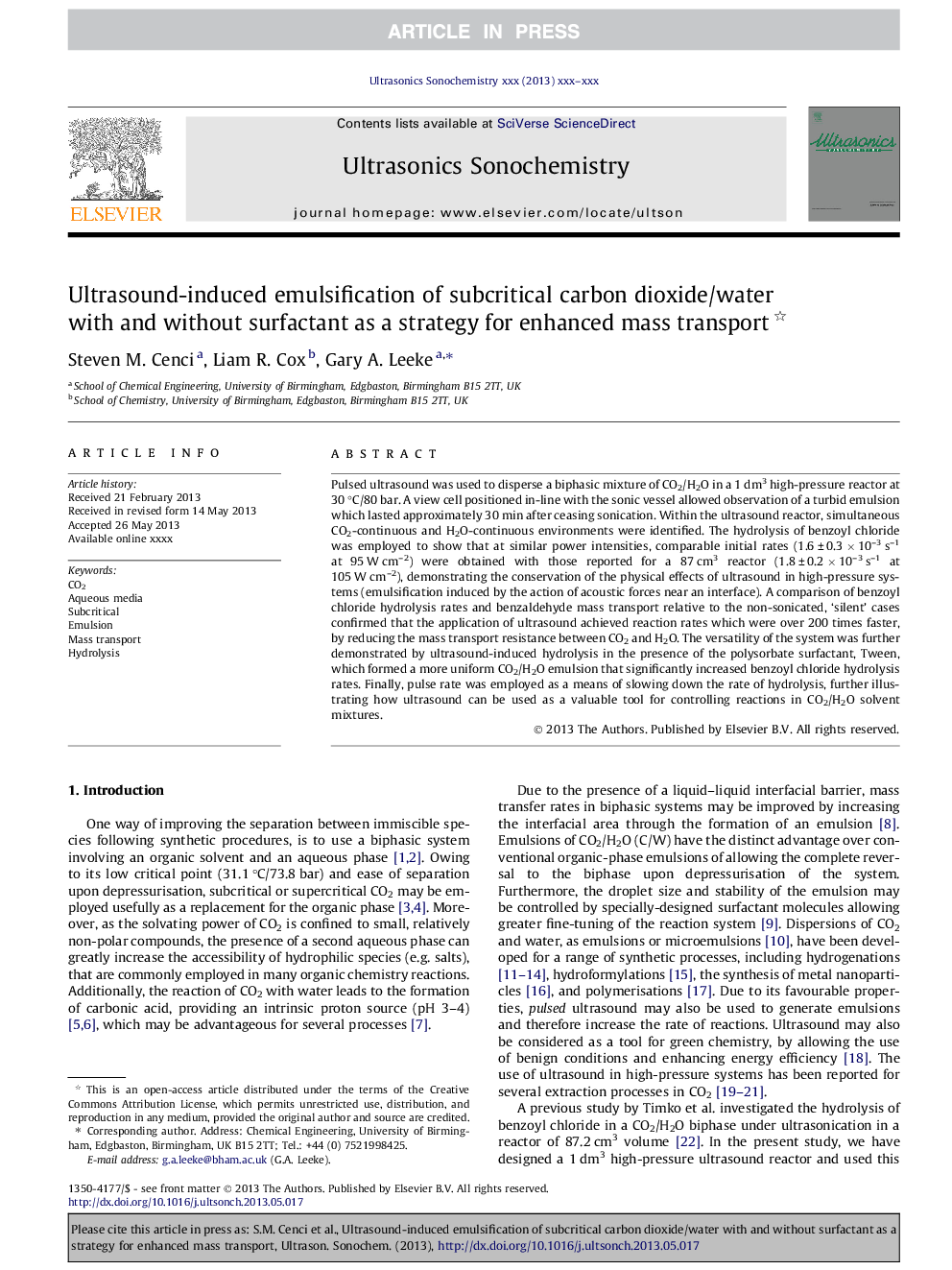| Article ID | Journal | Published Year | Pages | File Type |
|---|---|---|---|---|
| 10566129 | Ultrasonics Sonochemistry | 2014 | 8 Pages |
Abstract
Pulsed ultrasound was used to disperse a biphasic mixture of CO2/H2O in a 1 dm3 high-pressure reactor at 30 °C/80 bar. A view cell positioned in-line with the sonic vessel allowed observation of a turbid emulsion which lasted approximately 30 min after ceasing sonication. Within the ultrasound reactor, simultaneous CO2-continuous and H2O-continuous environments were identified. The hydrolysis of benzoyl chloride was employed to show that at similar power intensities, comparable initial rates (1.6 ± 0.3 Ã 10-3 s-1 at 95 W cm-2) were obtained with those reported for a 87 cm3 reactor (1.8 ± 0.2 Ã 10-3 s-1 at 105 W cm-2), demonstrating the conservation of the physical effects of ultrasound in high-pressure systems (emulsification induced by the action of acoustic forces near an interface). A comparison of benzoyl chloride hydrolysis rates and benzaldehyde mass transport relative to the non-sonicated, 'silent' cases confirmed that the application of ultrasound achieved reaction rates which were over 200 times faster, by reducing the mass transport resistance between CO2 and H2O. The versatility of the system was further demonstrated by ultrasound-induced hydrolysis in the presence of the polysorbate surfactant, Tween, which formed a more uniform CO2/H2O emulsion that significantly increased benzoyl chloride hydrolysis rates. Finally, pulse rate was employed as a means of slowing down the rate of hydrolysis, further illustrating how ultrasound can be used as a valuable tool for controlling reactions in CO2/H2O solvent mixtures.
Related Topics
Physical Sciences and Engineering
Chemistry
Chemistry (General)
Authors
Steven M. Cenci, Liam R. Cox, Gary A. Leeke,
